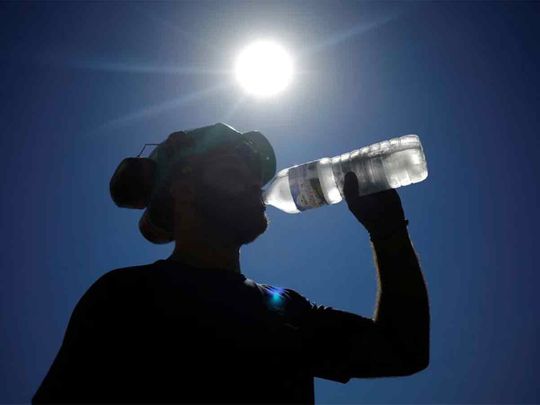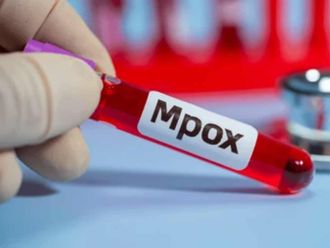
Runners are gearing up for the summer training season and, for many, that includes hot and humid long runs. Running under those conditions - for instance, temperatures greater than 80 degrees Fahrenheit and relative humidity of more than 50 per cent - requires extra attention to hydration. Research shows that hydration status can affect athletic performance and health, particularly while exercising in the heat.
We spoke with researchers and experts in hydration about the best ways to hydrate before, during and after a long run of 90 minutes or more in hot weather.
1. Hydrate adequately before your run
Runners should begin their long run in what researchers call a "euhydrated or well-hydrated state," said Courteney Benjamin, an assistant professor of kinesiology at Samford University. It can be difficult to catch up to your hydration status during the run if you are not properly hydrated, experts said.
"It's kind of like you're starting a trip and you have 300 miles to go, and you've only got gas in the tank to go 150 miles," Benjamin said. "If you're not starting hydrated, you just have less in the tank to give."
If you're going out for a long run in the heat in the morning, you should consume a couple of extra glasses of water the evening before within a few hours of dinner, said Douglas Casa, chief executive of the Korey Stringer Institute at the University of Connecticut, a not-for-profit organization focused on athlete health and safety. If it's more of a midday run, take in extra fluids around breakfast time or midmorning of the same day, he said.
After your run, you want to replace what you lost within 60 to 90 minutes of completing the activity, Casa said. Drink to replace any fluid deficits, and then have a healthy amount of fluid with your next meal, he said.
2. Plan how you'll hydrate during your run
Whether you should drink until you're no longer thirsty or use a preestablished drinking plan depends on the length of the run, the weather and your goal, experts said.
If your run is over 90 minutes in the heat and you have a competitive performance goal, Benjamin recommended having a plan based on your sweat rate - how much you sweat during physical activity - to determine how much fluid to consume. There are online guides to help you calculate your sweat rate.
For runs shorter in duration, lower in intensity or in a cooler environment, "drinking to thirst is probably going to be good enough for you," she said.
Having access to water is also important. Plan your route so you know where the water fountains are located. If there aren't any, bring water with you in a hydration pack or bottle belt, said Tammy Whyte, a running coach based in Chicago. "Even for shorter runs in the summer, if it's hot or humid, I always have water with me," she said.
3. Don't overhydrate
While hydration is key, it is critically important that runners do not drink to the point that they are gaining weight during their runs, Benjamin said. That may be a sign that you are overhydrating, which may lead to hyponatremia, a rare but potentially fatal condition where the blood sodium level is below normal.
"Ideally, you start the session well hydrated, and then you don't gain weight at all," Benjamin said.
To know if you are gaining weight during runs, weigh yourself before and after a run. Other, more direct symptoms of hyponatremia, Benjamin said, may include feeling dizzy and nauseous or having swollen hands and feet.
4. Consider sodium or electrolyte drinks
Replenishing sodium levels through sports drinks or powdered electrolyte mixes can be helpful, especially in competitive settings, experts said.
Sodium can be beneficial during long runs in the heat because it promotes thirst and makes us want to drink more fluid, Benjamin said.
Experiment with those drinks during a training run and not for the first time during a race. "Sometimes it's more sweet, and some people don't really like that," said Thijs Eijsvogels, an associate professor of exercise physiology at Radboud University Medical Center in the Netherlands.
Casa recommended rehydrating with sodium after your run, as well. "Because sodium is going to help you hold onto the fluid that you're drinking," he said. "It's a more efficient use of the time and the volume that you're drinking."
5. Know how much water your body needs
Researchers recommended figuring out your hydration status and sweat rate. Each person's body is different, and knowing how much you're sweating will give you the most accurate understanding of how much you need to hydrate.
There is a simple technique to check your baseline hydration status at home, researchers said. It's known as the WUT method, which stands for body weight, urine colour and thirst perception.
Weigh yourself before and after your run with minimal clothing and use your sweat rate calculation to avoid reaching 2 per cent body mass loss on future runs, Benjamin said.
Experts said that losing more than 2 per cent of your body mass of fluid can affect performance. "You can start to see negative consequences of excessive body temperature rise," Casa said. "You get hotter, faster."
"Keep in mind that factors like the environment and exercise intensity can impact sweat rate," Benjamin said, "so if you're using this information for a race, you want to calculate it in the most similar conditions as that race."
Urine colour can also be a useful metric for assessing hydration status. The Korey Stringer Institute uses a colour-coded chart, in which the higher the number, the greater the degree of dehydration.
If your urine "looks more like apple juice, you're probably not hydrated," Benjamin said. "If it looks more like lemonade, you probably are."
And lastly, if you feel "very thirsty" after a run, that's also an indication that you are a little dehydrated, Eijsvogels said. "You should drink more the next time you go out for a run," he said.









